Best Uses For Leftover Lumber 2025
- August 30, 2023
- 0 comment
Hello to all my fellow DIY enthusiasts! If you’re in a situation similar to mine, you might have a collection of unused wood from previous projects. You know, those random-sized bits of wood that you can’t bring yourself to discard? Well, I recently faced this very scenario, and I must say, I embarked on a creative adventure that resulted in uncovering some incredibly innovative applications for these seemingly insignificant remnants. Come along with me as I reveal my favorite top ten methods for upcycling surplus lumber – think of it as a personal rundown, of sorts!
This article aims to provide you with a comprehensive overview of the top 10 ways to utilize excess lumber, enhancing the experience for DIY enthusiasts by making it more convenient, productive, and appealing.
Understanding Uses For Leftover Lumber
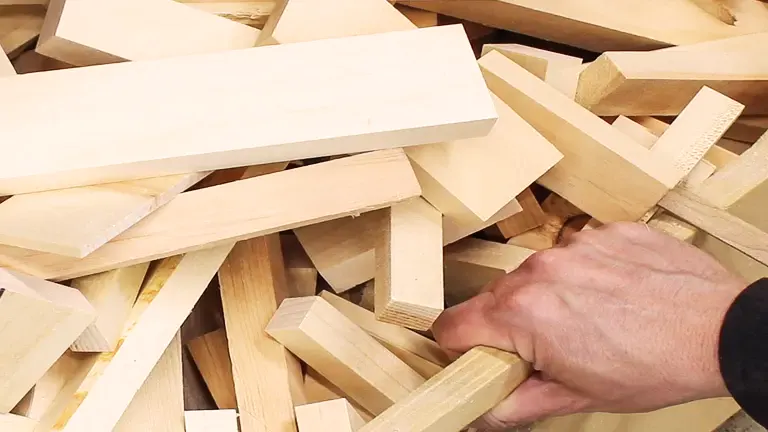
Understanding the Uses of Leftover Lumber involves recognizing the numerous creative and practical applications for surplus wood materials. Whether it’s repurposing small scraps into decorative items like picture frames and coasters, or employing larger pieces to construct functional pieces such as shelves, garden planters, or even furniture, the potential is vast.
By tapping into these uses, individuals can not only reduce waste but also embark on cost-effective and environmentally friendly DIY projects, adding a personalized touch to their spaces while honing their woodworking skills.
10 Best uses for leftover lumber:
- Bathtub Seat And Shelf
- Egg Storage
- Plant Stands
- Cell Phone Stand
- Wine Rack
- Desk Clock
- Kids’ Building Blocks
- Tool Holders
- Mini Side Table
- Wooden Mat
The 10 Best Uses For Leftover Lumber
Selecting appropriate applications for surplus wood goes beyond mere selection; it involves grasping the distinctive qualities inherent in various wood/lumber varieties and aligning them with diverse crafting requirements. Let’s delve into a more profound examination of the finest ways to employ leftover lumber:
1. Bathtub Seat And Shelf
Indulge in ultimate relaxation with a meticulously designed bathtub seat and shelf. Expertly crafted from luxurious materials, this piece not only provides comfort but also serves as a stylish storage solution for your bath essentials. Imagine reclining in your tub with everything you need at your fingertips – a true epitome of refined convenience.
When it comes to the intricately crafted bathtub seat and shelf, several essential characteristics contribute to its overall quality, usability, and visual appeal. Let’s explore these key features in detail:
- Hardness: Materials like teak, cedar, or oak provide durability in humid environments due to their hardness.
- Workability: Teak and oak’s workability lets artisans shape intricate designs and create polished surfaces.
- Grain Pattern: Wood’s grain pattern, like teak’s elegant straight lines, enhances aesthetics and showcases natural beauty.
- Common Uses: This handcrafted piece adds comfort and convenience, serving as seating and holding bath essentials for a serene bathing experience.
2. Egg Storage
Bid farewell to ordinary egg storage remedies with a finely made egg holder that transcends the mundane. Meticulously hand-carved by accomplished craftsmen, this storage apparatus not only guarantees the secure preservation of your eggs but also introduces a rustic allure to your kitchen surface. Every egg discovers its individual cozy nook, culminating in an imaginative yet functional supplement to your culinary area.
Delving into the realm of expertly crafted egg storage, we uncover a fusion of functionality and aesthetics. This meticulously designed storage solution showcases several pivotal attributes that define its quality, utility, and visual allure. Let’s delve into these critical characteristics:
- Hardness: While not overly tough, materials like wood or ceramic offer the right balance of durability and delicacy, safeguarding eggs effectively over time.
- Workability: Meticulous craftsmanship carves snug compartments for each egg, enhancing functionality. Wood’s pliability allows for secure, gentle recesses.
- Grain Pattern: The material’s grain, whether wood’s fine lines or ceramic’s smoothness, adds an artistic touch, making the storage visually appealing in kitchens.
- Common Uses: Egg storage is both practical and decorative. With individual compartments preventing cracking, it adds charm to kitchen counters and aids organization, blending artistry and utility.
3. Plant Stands
Enhance the charm of your indoor garden by incorporating elegantly handcrafted plant stands. These thoughtfully designed pieces serve as a captivating stage to present your potted botanical friends. Crafted with precision using materials like wood or metal, these stands boast a diverse range of styles – spanning from sleek minimalism to intricate ornateness. This inherent versatility ensures that they seamlessly harmonize with and complement any interior design theme you might have in mind.
When it comes to intricately crafted Plant Stands, several vital characteristics define their quality, usability, and visual allure. Let’s delve into these critical features:
- Hardness: The materials used in Plant Stands strike a balance between strength and elegance, ensuring durability without compromising aesthetics.
- Workability: Crafting Plant Stands requires meticulous attention to detail, allowing for shaping and designing to accommodate various plant sizes and shapes.
- Grain Pattern: The unique grain patterns of materials like wood or metal contribute to the visual appeal of Plant Stands, enhancing their overall design.
- Common Uses: Beyond their functional role in holding plants, these stands often serve as decorative pieces, elevating indoor and outdoor spaces’ aesthetics.
4. Cell Phone Stand
Revamp your lifestyle using a uniquely crafted cellphone stand that combines aesthetics with utility. Engaging in this do-it-yourself endeavor offers an enjoyable and imaginative means to exhibit your skills while infusing a personalized feel into your technological accessories. With the cellphone stand tailored to your preferences, you’ll relish the convenience of a dependable and easily reachable spot to keep your phone, regardless of your location. Even leftover wood can be repurposed for this concept. Simplistic woodworking undertakings centered around gadgets and tech are bound to garner attention when put up for sale.
In the realm of intricately crafted Cell Phone Stands, several vital characteristics define their quality, usability, and visual allure. Let’s delve into these critical features:
- Hardness: The chosen materials for Cell Phone Stands strike a balance between sturdiness and finesse, ensuring both durability and an appealing aesthetic.
- Workability: The design process of Cell Phone Stands involves meticulous attention to detail, allowing for precise shaping and construction to accommodate various phone sizes and angles.
- Grain Pattern: Materials like wood or metal contribute unique grain patterns, enhancing the visual appeal of Cell Phone Stands and adding a touch of elegance.
- Common Uses: Beyond their practical function of holding cell phones, these stands often serve as stylish accessories, making them ideal for hands-free use, video watching, or as decorative items on desks and countertops.
5. Wine Rack
For individuals passionate about wine and possessing a keen sense of aesthetics, the hand-forged wine rack offers an exquisite storage answer. Meticulously fashioned with the highest level of precision, this wine rack not only guarantees the safety of your cherished bottles but also functions as an exquisite work of art. Its elaborate design, coupled with its robust structure, not only ensures the secure exhibition of your valuable wine assortment but also adds a touch of elegance to any space.
When considering intricately crafted Wine Racks, several crucial characteristics define their quality, usability, and visual allure. Let’s delve into these critical features:
- Hardness: The materials chosen for Wine Racks strike a balance between durability and elegance, ensuring sturdy support for wine bottles while maintaining an attractive appearance.
- Workability: Crafting Wine Racks involves meticulous attention to detail, allowing for precise shaping and construction to accommodate various bottle sizes and arrangements.
- Grain Pattern: Materials like wood or metal contribute distinct grain patterns, enhancing the visual appeal of Wine Racks and adding a touch of sophistication to their design.
- Common Uses: Beyond their functional role of storing wine bottles, these racks often serve as decorative elements, elevating the ambiance of wine cellars, kitchens, or dining spaces. They provide an organized and stylish way to showcase and access a collection of wines.
6. Desk Clock
Elevate timekeeping to an art form through a meticulously crafted desk clock. By blending classic artisanship with modern design, this clock transcends its basic function, evolving into a splendid ornamental item that harmonizes with your working environment. The meticulous focus on intricacies and the selection of materials together underscore the craftsman’s expertise, turning this clock into a true embodiment of skill.
In the world of intricately crafted Desk Clocks, several crucial characteristics define their quality, usability, and visual allure. Let’s delve into these critical features:
- Hardness: The chosen materials for Desk Clocks strike a balance between durability and refinement, ensuring both longevity and an appealing aesthetic for the timepiece.
- Workability: Crafting Desk Clocks requires meticulous attention to detail, allowing for precision in shaping and construction to create functional yet decorative timekeeping instruments.
- Grain Pattern: Materials like wood or metal contribute distinct grain patterns, enhancing the visual appeal of Desk Clocks and adding a touch of elegance to their design.
- Common Uses: Beyond their primary function of telling time, these clocks often serve as decorative accents, gracing desks, mantles, and shelves with their intricate designs. They combine artistry and utility to enhance interior spaces.
7. Kids’ Building Blocks
Foster creativity and imagination in your young ones by introducing them to handcrafted building blocks. Every individual block stands as a tiny masterpiece, meticulously fashioned from non-toxic elements and refined to an impeccable finish. With their sleek surfaces and lively hues, these blocks not only ensure a secure playtime experience but also captivate and engage, becoming delightful companions in the realm of imaginative play.
When considering intricately crafted Building Blocks, several fundamental characteristics define their quality, usability, and visual allure. Let’s delve into these critical features:
- Hardness: The materials chosen for Building Blocks strike a balance between durability and precision, ensuring sturdiness for construction while maintaining an engaging tactile experience.
- Workability: Crafting Building Blocks demands meticulous attention to detail, allowing for precise shaping and construction to facilitate creative and stable arrangements.
- Grain Pattern: Materials like wood or plastic contribute unique textures and patterns, enhancing the visual appeal of Building Blocks and adding an extra layer of sensory exploration.
- Common Uses: Beyond their primary purpose of fostering imaginative play, these blocks often serve as educational tools, promoting cognitive development and spatial reasoning. They encourage creativity and collaborative play in both children and adults.
8. Tool Holders
Organize your workspace with hand-forged tool holders that marry functionality with aesthetics. Crafted with durability in mind, these holders keep your tools within reach while adding an industrial-chic vibe to your garage or workshop. The artisan’s careful shaping and finishing ensure a seamless blend of form and utility.
In the realm of intricately crafted Tool Holders, several vital characteristics define their quality, usability, and visual allure. Let’s delve into these critical features:
- Hardness: The materials selected for Tool Holders find a balance between durability and precision, providing robust support for tools while exhibiting an appealing aesthetic.
- Workability: Crafting Tool Holders demands meticulous attention to detail, allowing for precise shaping and construction to accommodate a variety of tool sizes and shapes.
- Grain Pattern: Depending on the materials used, such as wood or metal, distinct patterns emerge, enhancing the visual appeal of Tool Holders and contributing to their overall design.
- Common Uses: Beyond their utilitarian function of organizing tools, these holders often serve as practical additions to workshops, garages, or studios. They provide easy access, promote organization, and contribute to an efficient workspace.
9. Mini Side Table
Elevate the ambiance of your living space with a mini side table that has been expertly carved with great attention to detail. Constructed from premium-grade wood, this table introduces an element of elegance to your interior design. Its modest dimensions and elaborate craftsmanship render it a versatile addition, ideally suited for showcasing beloved keepsakes or serving as a resting spot for your nightly cup of tea.
When considering intricately designed Mini Side Tables, numerous vital traits play a role in defining their overall excellence, practicality, and visual allure. Let’s delve into these significant aspects:
- Sturdiness: The chosen materials for Mini Side Tables achieve a balance between durability and elegance, ensuring a sturdy foundation while maintaining an attractive appearance.
- Craftsmanship: Crafting Mini Side Tables demands careful attention to detail, allowing for meticulous shaping and construction to accommodate various sizes and functionalities.
- Texture and Pattern: Depending on the materials employed, such as wood or metal, distinct textures and patterns emerge, enhancing the visual charm of Mini Side Tables and contributing to their overall design.
- Versatility: Beyond their primary function of providing a surface for items, these tables often serve as versatile pieces, adding both practicality and style to living spaces, bedrooms, or even outdoor areas. They can hold drinks, books, or decorative items while enhancing the aesthetics of the surroundings.
10. Wooden Mat
Enhance your entryway with a wooden mat that has been carefully hand-painted. Constructed using weather-resistant components, this mat stands resilient against the elements while providing a friendly and inviting welcome to your visitors. Through its customized design and meticulous focus on visual appeal, this unassuming mat is elevated to the status of a noteworthy decor element that makes a statement.
When we turn our attention to intricately designed Wooden Welcome Mats, numerous crucial attributes come together to define their overall excellence, practicality, and visual charm. Let’s delve into these pivotal aspects:
- Durability: The selected materials for Wooden Mats strike a balance between toughness and elegance, ensuring lasting resilience while maintaining an inviting appearance.
- Craftsmanship: Crafting Wooden Mats necessitates meticulous attention to detail, allowing for careful shaping and construction to accommodate functionality and aesthetics.
- Grain Detail: Depending on the wood used, distinct grain patterns emerge, enhancing the visual appeal of Wooden Mats and contributing to their overall design.
- Versatility: Beyond their primary role of welcoming guests, these mats often serve as versatile decor pieces, adding both practicality and rustic charm to entryways or outdoor spaces. They create a warm atmosphere while keeping dirt at bay.
All In All Conclusion
In the realm of woodworking, the myriad possibilities offered by leftover lumber are a testament to human creativity and environmental responsibility. From practical items like wine racks, mini side tables, and plant stands that breathe life into spaces, to more imaginative creations like kids’ building blocks and charming welcome mats, repurposing lumber showcases innovation. Beyond the functional and aesthetic appeal, repurposing leftover lumber reflects a commitment to sustainability, minimizing waste and transforming remnants into meaningful, eco-conscious pieces. Ultimately, these projects remind us that resourcefulness can result in beauty and purpose, connecting craftsmanship with a responsible approach to our materials and the environment.
Frequently Asked Questions (FAQs)
- What are the best uses for leftover lumber? The best uses for leftover lumber encompass a wide range of creative and practical applications. These include crafting plant stands, wine racks, mini side tables, kids’ building blocks, wooden welcome mats, and more.
- Why repurpose leftover lumber? Repurposing leftover lumber not only minimizes waste but also encourages sustainable practices. It offers an opportunity to transform discarded material into functional and aesthetic items, adding value to otherwise unused wood.
- Can I use small leftover wood pieces effectively? Absolutely! Small wood remnants can be ingeniously employed in various projects. They are ideal for crafting intricate items like desk clocks, kids’ building blocks, and wooden welcome mats, showcasing that even the smallest pieces have potential.
- Do these projects require advanced woodworking skills? While some projects might demand moderate woodworking skills, many are designed to be approachable for all skill levels. Detailed instructions and online resources can guide beginners through the process.
- Are these projects cost-effective? Yes, repurposing leftover lumber can be highly cost-effective. Since you’re using materials you already have, the cost is significantly reduced, making these projects both environmentally friendly and budget-friendly.
- Can these items be used as gifts? Certainly! Many of these crafted items make for thoughtful and unique gifts. Personalized items like wooden welcome mats or desk clocks hold sentimental value and demonstrate the effort put into creating them.
- Can I customize these projects to match my décor? Absolutely, customization is key. You can choose wood finishes, colors, and designs that align with your personal style and home décor, ensuring a seamless integration of these repurposed pieces.
- Is safety a concern when working with leftover lumber? Safety should always be a priority when woodworking. While the scale of these projects is generally manageable, it’s important to use proper tools, wear safety gear, and follow recommended safety guidelines to prevent accidents and injuries.
“Your insights matter to us! Feel free to share your personal experiences and thoughts regarding the 10 Best Uses for Leftover Lumber in the comments section. Your creative ideas and feedback could be invaluable to others looking to maximize their woodworking potential and embrace sustainable crafting practices.”

Edward Smith
Forestry AuthorWoodworking is about more than crafting; it's a harmonious connection with nature, mastering tools, and preserving our environment. I'm here to share my knowledge and experiences with you, forging a future where we can embrace wood's beauty and utility while safeguarding our forests' health and diversity.



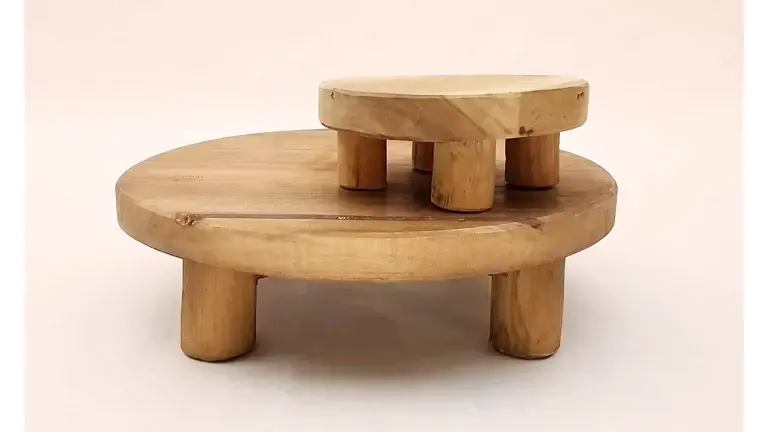
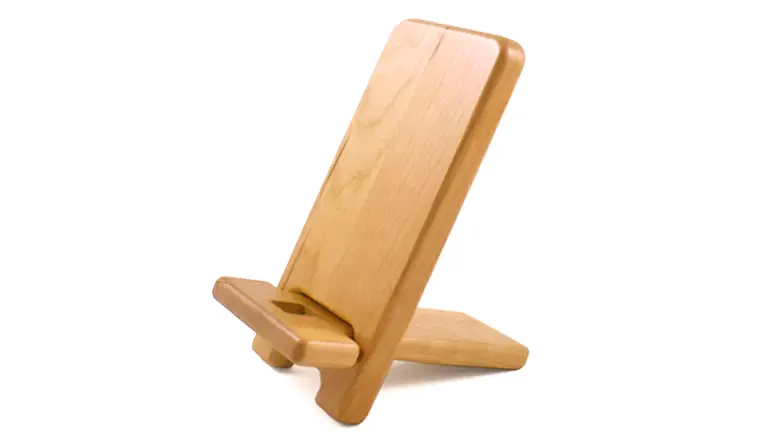

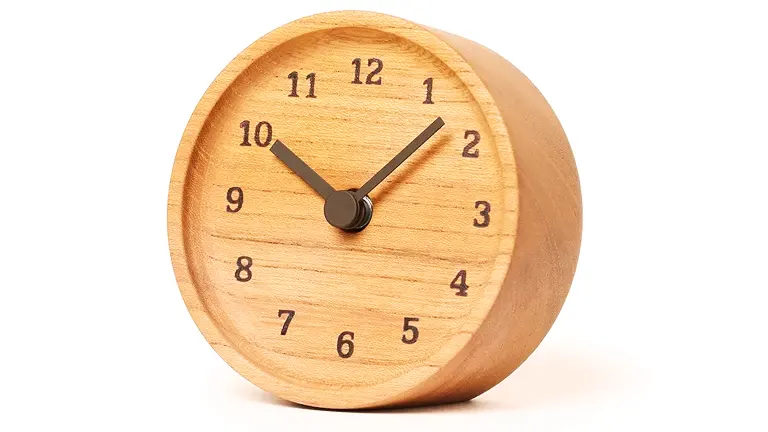

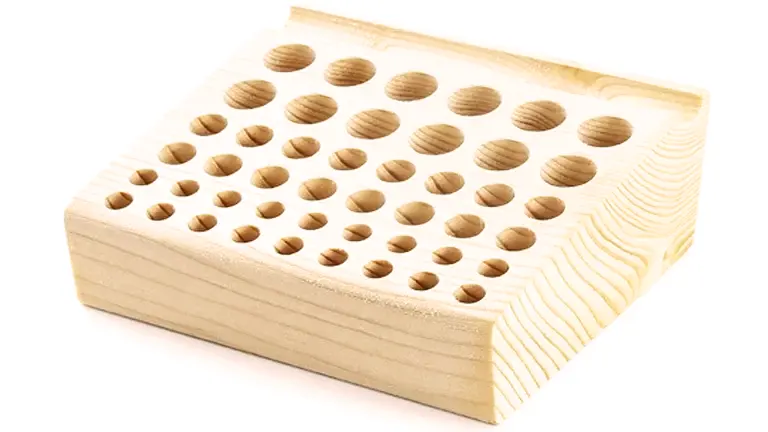










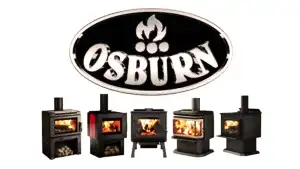



Leave your comment